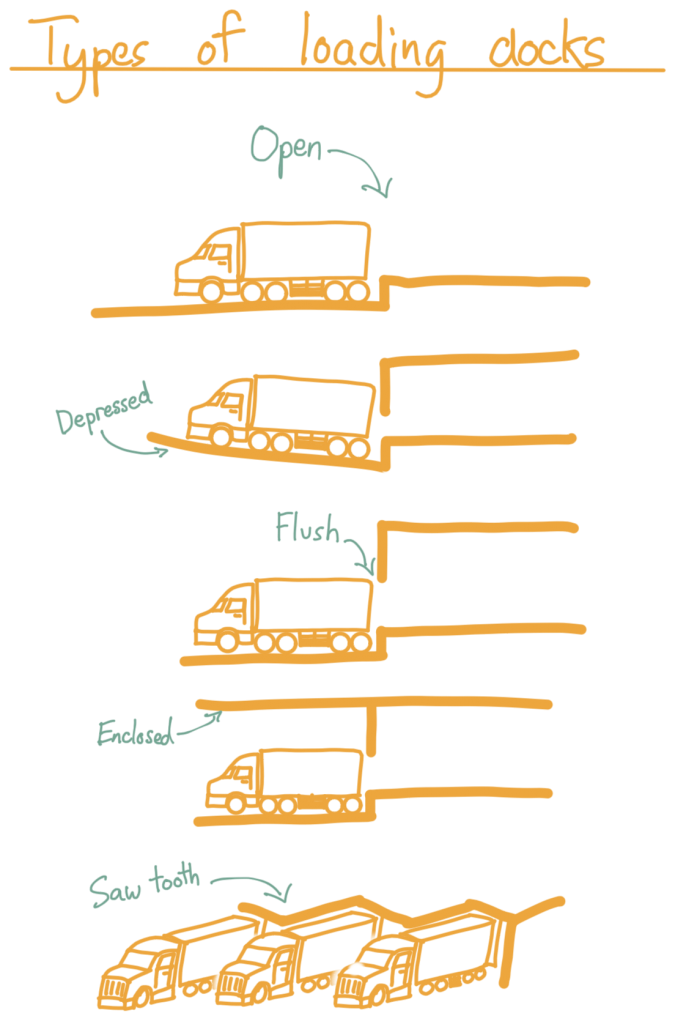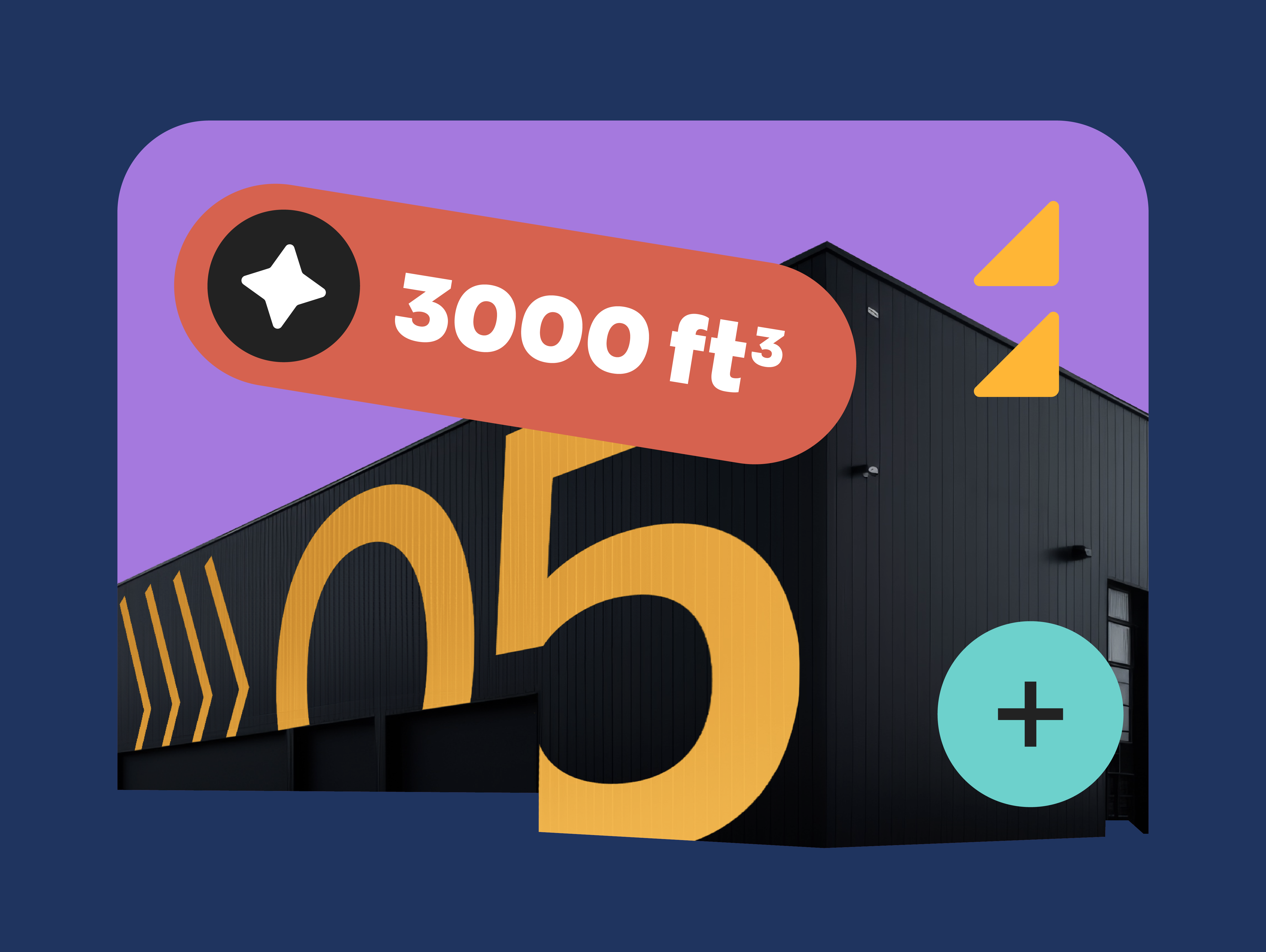If you run your own small business (and most inFlow users do), running a warehouse space may not be on your radar. You probably started out by using any available space for storing inventory, like a parent’s basement, a garage, or even your own home.
But if your sales are growing and you’re finding that your current storage space is limiting you, then it could be time to expand to a dedicated warehouse to store products and fulfill orders. In this article we’ll focus on helping you plan that next step and provide a few tips on what to look out for before signing your first commercial lease.
[If you’d like another business to handle your logistics for you, we’ve written another article on how to get started with Amazon FBA.]
What to consider in a warehouse lease
Commercial leases can span just a handful of months, but in most cases it’s more cost-effective to sign for a longer period, like three to five years.
Location of the warehouse space, the amenities, and the square footage affect the price of the leased space. If you’d like to see samples of average warehouse costs in your city, Loopnet.com is a good resource for finding commercial properties. Just pay attention to see what percentage of the space is designated as a warehouse, as certain spaces are actually split between office and warehouse space. For this article, we’ll assume that the space you’re after is mostly or all storage.
If the rate feels competitive, check to see if the lease allows you to renew the rent at a similar or slightly increased price. This option to renew helps because you can choose a shorter overall lease and keep from overextending yourself, while also allowing you to stay on at that location if it works well for your business.
If you’d like extra security, you can also ask about a buyout. For example, if you needed to move out of the warehouse with 15 months left on the lease, a buyout could help pay just three months in a lump sum, instead of having to pay the entire remaining period of your lease. If a buyout isn’t possible, you can ask about the possibility of sub-letting the space to another business.
Location, location, location
Now let’s dig a little into what can make or break a location.
If you rely heavily on local vendors, you can use a service Google Maps to see how long it takes to drive from their warehouse over to yours. If most of your incoming products come from vendors outside your city, check on whether your products come in by air, rail, or sea, and use that information to see how long your products would take to arrive at the potential warehouse location. The same concept should be applied to the carriers (UPS, FedEx, etc.) to make sure they service that area.
You’ll also want to factor in how your employees can reach the new location, whether by public transit or with available parking. It’s difficult enough to source good, reliable labor, and offering your staff a reasonable commute will increase the chance that they’ll stick around longer. This lets them build more experience on the job to make them even more efficient, and it also lowers your turnover and reduces the number of new hires you need to train.
Look out for your loading dock
When examining the loading dock, look into how many are available for use, and whether you’ll have to share them with other companies at that warehouse.
The type of dock is also important to consider, because certain kinds of products may be very sensitive to the elements, and not all docks are protected from the weather. A few common types of loading docks are:
- Open: The truck backs up to an open dock area, which is exposed to the elements. These can be harder to manage in inclement weather.
- Depressed: These kinds of docks have a driveway on an incline, which can require more care on behalf of the driver to prevent damaging the building.
- Flush: These seem to be some of the most common docks, with the opening of the loading dock staying completely flush with the building. Just make sure that there is a dock bumper outside, to prevent the truck from damaging the building during docking.
- Enclosed: These kinds of docks have a cover above them, to keep the elements off. These usually require ventilation to keep vehicle fumes from reaching dangerous levels.
- Saw tooth: Buildings with limited road space may require trucks to park at a roughly 45 degree angle to the dock, which arranges them in a sawtooth pattern. This usually requires more space from the building itself, but has the advantage of aligning the trucks for an easy exit.

While you tour the warehouse, check to see what kind of dock equipment may already be in place. Things like dock bumpers (to keep the trucks from damaging the dock) and wheel chocks (to keep parked trucks in place) help to ensure an efficient and safe receiving area.
Warehouse amenities and utilities
Although running a warehouse is different than running a standard office space, there is still some overlap. Simple amenities like men and women’s bathrooms, break areas, and employee parking or access to public transit are important considerations. This article from BigRentz has some great tips and graphics to help you visualize different warehouse layouts.
You might also want to check the availability of high-speed internet at that location, in case your warehouse management software (WMS) requires the internet.
Then there are the more warehouse-specific amenities to watch out for, like how the space can accommodate different products and your type of business. If you have consumable products that need refrigeration or if your business produces some hazardous waste, these are the kinds of things you should bring up before signing the lease. You’ll want to have a plan in place for the safe storage and disposal of any raw materials or byproducts.
Some warehouse listings may limit the type of activities they’ll allow on-premises (e.g., “No mechanic or repair services can be run from this location.”), so make sure that the owner or property manager understands what kind of business you run, so there are no misunderstandings to resolve down the line.
Finally, you’ll want to ask about the plans for maintaining the road and surrounding area, particularly for inclement weather. If there’s a snowstorm, for example, you should find out whose responsibility it is to plough it so that your warehouse can continue to operate properly.
Plan ahead before leasing a warehouse space
Since leasing commercial space is usually a commitment counted in years, it’s a good idea to check for other available space at that warehouse, or one nearby. That way if you do outgrow the square footage included in your lease, you can expand without uprooting your current setup and compromising its efficiency. Switching a storage and fulfillment center is disruptive to your business and you want to minimize doing so, wherever possible.
Then there’s the matter of capital expenditures to improve the space. For example, if an HVAC unit is needed to keep the area cool, or extra shelving is required to maximize the cubic footage, you should discuss this with the owner or property manager. Most leases are customized for that specific relationship, so you might be able to establish a provision for the owner to pay for any upgrades to the space. Some property managers may not attach a charge to this as part of good-will, but it’s also possible that the upgrades may increase your rent when it comes time to renew.
These are the tips we’ve assembled for helping you choose your first warehouse space. If you’ve got any other solid advice that we haven’t covered here, we’d love to hear from you in the comments!
Want to easily manage the purchases, sales, and inventory levels at your warehouse? inFlow Cloud can help you receive, store, and pick your orders and offer live inventory levels to anyone who has internet access.








Great tips! Thanks for sharing!
Nice article on warehouse lease location tips. Found an interesting article on dock scheduling here.
thanks they drove me to the grid
Thank you for sharing these stunning point with us. I really like your points about the warehouse, it was superb. I will share your article with my friends also. Always share a new new blog for us.
Hi rarealinfra,
Thanks for reading and for the kind words. We’re always posting new content to help our readers however we can. You can subscribe to our newsletter on this page to stay up to date with all our content!
Cheers,
Jared